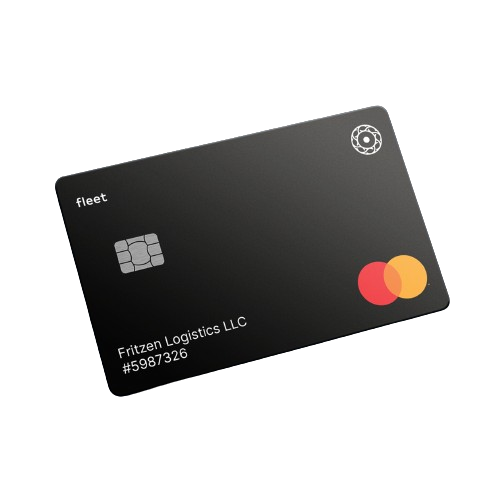Fleet operations depend on more than just the vehicles themselves. Driving behavior plays a crucial role in fuel efficiency, vehicle maintenance, and overall fleet safety. Fleet managers who invest in fleet driver coaching and telematics can significantly reduce risks, lower operational costs, and improve overall driver performance.
As such, telematics technology provides real-time insights into driver safety and allows fleet managers to make data-driven decisions that benefit both individual drivers and the company as a whole. When combined with driver coaching programs, telematics creates an effective system for coaching drivers, optimizing fuel usage, and maintaining compliance with industry regulations.
What is Driver Telematics?
Telematics is a system that collects and transmits telematics data from a motor vehicle to provide valuable insights on driver performance and vehicle health. By using GPS, onboard diagnostics, and sensors, telematics tracks key metrics such as speed, location, fuel consumption, and harsh braking events.1
The data gathered from telematics allows fleet managers to monitor trends, identify areas for improvement, and implement training programs that encourage safer and more efficient driving practices.
How Does Telematics Influence Driver Coaching?
Integrating driver coaching and telematics into fleet operations allows companies to correct unsafe driving habits before they lead to accidents or increased maintenance costs. Here is how telematics supports successful driver coaching programs:
- Real-Time Monitoring of Driving Behavior: Telematics provides instant visibility into driving habits such as speed limit compliance, acceleration patterns, and braking tendencies. This real-time feedback helps fleet managers quickly identify drivers who need additional coaching.
- Identifying Risky Behaviors: Dangerous habits like distracted driving, excessive idling, and harsh braking can compromise fleet safety. With telematics, fleet managers can pinpoint these behaviors and provide targeted coaching to correct them. In fact, fleets that use telematic have recorded a 30% decrease in speeding accidents.2
- Providing Actionable Insights for Coaching Sessions: A data-driven approach to coaching allows companies to deliver personalized feedback to individual drivers. Instead of generalized training, fleet managers can focus on specific improvement areas, ensuring that coaching efforts are more effective.
Benefits of Integrating Telematics into Driver Coaching
Fleet managers who invest in fleet driver coaching supported by telematics gain multiple advantages, from enhanced driver safety to cost savings.
1. Improved Fleet Safety
Telematics helps create a safer work environment by reducing speeding, aggressive driving, and distracted driving. Real-time alerts ensure that unsafe behaviors are addressed before they escalate into serious issues.
2. Optimized Fuel Efficiency
Reducing excessive idling, unnecessary acceleration, and inefficient route planning can lower fuel consumption. This leads to cost savings, a reduction in fleet emissions, and improved overall efficiency.
3. Lower Maintenance Costs
Poor driving habits, such as harsh braking, put unnecessary strain on fleet vehicles. Telematics identifies these habits and helps fleet managers implement driver coaching programs that promote smoother driving and reduce vehicle wear and tear.
Why Do I Need Telematics for My Fleet?
For modern fleets, telematics is more than just a tracking system—it is a vital tool for improving operations and maintaining a competitive edge. Here is why telematics should be a core part of your fleet safety program:
- Data-Driven Decision-Making: Telematics provides actionable insights that help fleet managers make informed choices about driver training, vehicle maintenance, and route optimization.
- Compliance with Industry Regulations: Many industries require strict adherence to safety and operational standards. Telematics helps companies maintain compliance by documenting driver performance and vehicle conditions.
- Competitive Advantage in Efficiency: Companies that use driver coaching and telematics gain an edge over competitors by lowering operational costs, reducing liability, and ensuring that their fleet runs efficiently.
Implementing Telematics and Driver Coaching Programs
For fleet managers looking to establish a successful driver coaching program, a structured approach to implementation is essential.
- Selecting the Right Telematics System: Not all telematics solutions offer the same features. It is crucial to choose a system that aligns with your fleet’s specific needs, including real-time monitoring, route tracking, and driver performance analytics.
- Training Drivers to Embrace Telematics: Some drivers may be resistant to telematics tracking. Clear communication about the benefits, along with incentives for improved driving behavior, can encourage acceptance and cooperation.
- Establishing a Continuous Improvement Loop: Driver coaching should not be a one-time event. Regular feedback sessions, performance tracking, and positive reinforcement will help motivate drivers to adopt better habits over time.
Conclusion: Enhancing Fleet Performance with AtoB Fuel Cards
Integrating fleet driver coaching with telematics is a proven strategy for improving driver safety, lowering costs, and optimizing fleet operations. However, a complete fleet management solution also requires fuel efficiency tracking.
AtoB, a leading fuel card provider, offers a solution that seamlessly integrates with telematics systems. Our fleet fuel cards allow fleet managers to monitor fuel consumption, track driving behavior, and identify areas for further improvement. This data-driven approach not only reduces operational expenses but also enhances fleet safety and driver performance.
Fleet managers looking to maximize efficiency, reduce fleet emissions, and enhance their fleet safety program should consider leveraging AtoB’s offerings. With the right combination of driver coaching, telematics, and fuel management, your fleet can achieve greater safety, sustainability, and profitability.
Sources:
Heavy AI. Vehicle Telematics. https://www.heavy.ai/technical-glossary/vehicle-telematics#:~:text=Vehicle%20telematics%20combines%20GPS%20systems,with%20the%20vehicle's%20internal%20behavior
Telematica. Understanding the Role of Telematics in Fleet Risk Management. https://telematica.com.au/understanding-the-role-of-telematics-in-fleet-risk-management/
Get started with AtoB

Reviewed by
Vedant Khamesra is the driving force behind product management at AtoB. Specializing in strategic partnerships, SMB solutions, and new product development, Vedant seamlessly navigates P&L responsibilities while leading product execution and strategy. He is fueled by AtoB's mission to empower truckers and fleets with intelligent financial tools and services, making their lives easier and more rewarding.
Start saving today


